It takes getting used to, the French custom of making time and space for life. We know 24-hour supermarkets, restaurants open all weekend. It is different in vast cities, but in the South of France the supermarkets close at seven or eight pm, and many of the restaurants will take Wednesday or Saturday evenings off. Good for them. While we were driving between Nice and Montpellier, we got off the highway to have our picnic lunch at a medieval hilltop village called Les Arcs. It was just noon when we drove in, and the high school students were going home for their two-hour lunch break. By the time we parked our car in the shade and walked up the steep cobbled passage ways to a bench under a tree, the whole place was dead. Behind the shuttered windows, presumably everyone was concentrating on their meal. We heard and saw no one for an hour; no radios, cell phone conversations or foot falls. It was a very peaceful lunch.
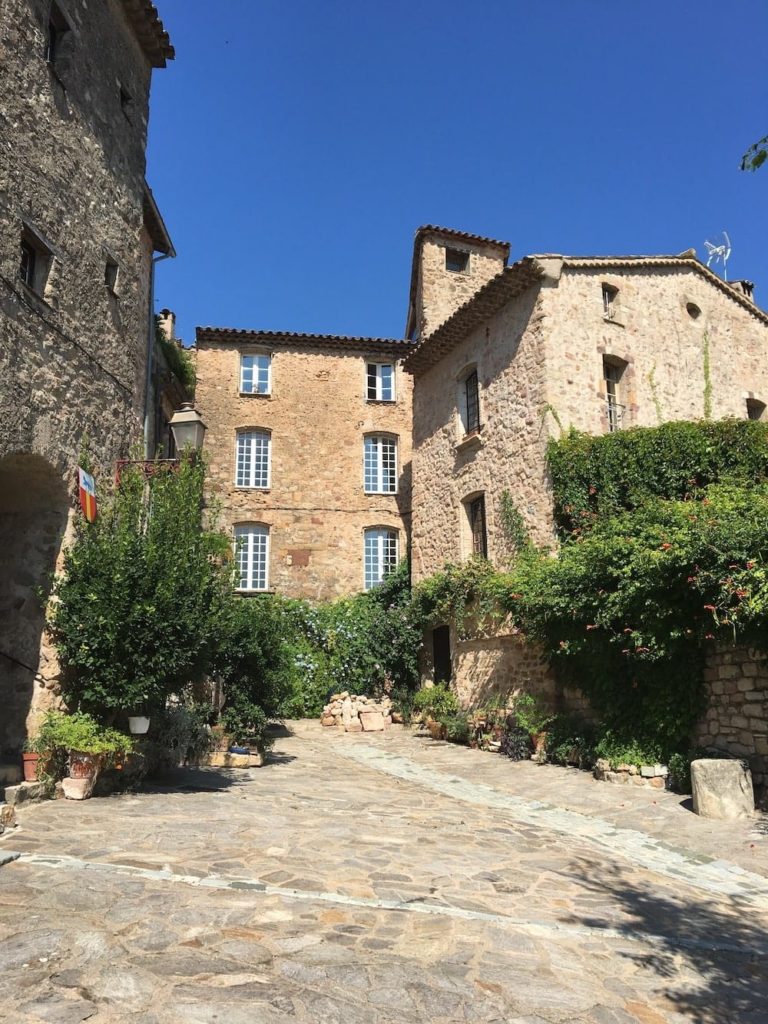
Our Airbnb host in Bordeaux greeted us cheerfully in the afternoon, no doubt after a satisfying meal. The flat is a pied-à-terre in the city for the retired couple who own it. They live 50 kilometers outside Bordeaux, in the country. We had a very detailed check in round every crook and cranny of the small apartment, which looked as though a bric-à-brac shop had exploded, and Madame had let objects rest where they landed. Modern off-the-shelf cityscape prints shared a wall with Napoleonic lithographs. Plastic roses were stuffed into the ornate gold frames of fin de siècle mirrors. A 1950s oscillating fan sat on an Indonesian carved sideboard. On the minute 1970s kitchen counter in shining fire engine red stood a brand-new toaster, espresso machine, and kettle. Madame asked excitedly whether I knew what the kettle was. Before she got the manual out, I explained that 99% of households in Canada used an electric kettle daily. “Oh,” she said, rather disappointed. “I thought the Spanish had invented it. I saw one there when we went on holiday last year.” I laid it on in my best French about how I loved a good cup of tea and was very thankful to have a kettle in an Airbnb at last. She beamed and proceeded with an exhaustive survey of every other kitchen appliance, the garage, and the garbage room.
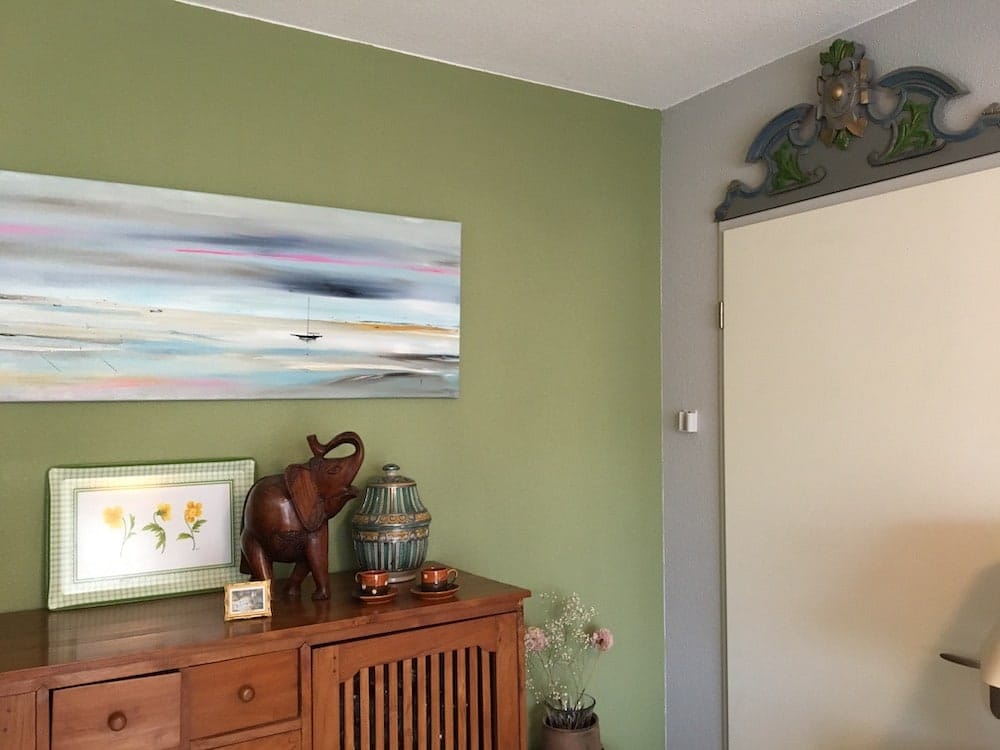
MLH was not following the conversation and I could sense him getting restless, but we had another 15 minutes of Madame explaining, drawings maps, putting a finger to her temple to show she was retrieving important facts from her memory, writing in her spidery French copperplate, then two phone calls to her husband to confirm details. Finally, having declared us almost as ‘adorable’ as the Quebecois they hosted last year, Madame bid us adieu. “What was all that about? Asked MLH. Was she telling you what to visit in the city?” “Oh no,” I laughed, “she was telling us where to eat.” I had not only which restaurants she recommended, but prices, specialities, whether it was family run, and whether they changed the menu daily according to what was fresh at the market. You know, the important stuff.
MLH wasn’t sure about this eating a big meal in the middle of the day business. I persuaded him to try it, and as he washed down the last of his duck in a fig sauce with a glass of Bordeaux sitting at an outside table in the sunshine, he agreed eating the French way has its merits. It certainly helps the tired tourist feet after hours of walking around the city. It’s also wonderful for people-watching. We were a bit startled to see a group of paratroopers, automatic weapons across chests, making their way silently up the street in front of the restaurant as we enjoyed our almond tart and coffee. Expected in Paris maybe, but not here. We presume it was a training exercise. There seems to be a big military presence in the area.

Our Bordeaux agenda was easy to follow; a good friend is from the region and she had given us excellent advice. First, a very good walking tour organized by the Tourist Office. Then food and drink. Then a trip to Saint Emilion and the Bordeaux vineyards. Followed by food and drink. Last, the seaside town of Arachon and the giant sand dune of Pilat. Followed by – you get the picture. We actually did well gathering free fruit from trees where we were staying in France (with the owners’ permission). Fresh figs, a succulent rosy pomegranate and, of course grapes straight from the vine. What a pleasure.
Bordeaux is a most homogeneous city, built on the smiley face curve of the very muddy and fast-flowing Garonne River. All the buildings are in sandy-coloured limestone, because the old wooden houses were torn down in the 1670s by Royal command and rebuilt in stone. The King was worried about fire after the Great Fire of London in 1666. There is a strong connection to England in this region. Eleanor of Aquitaine, ruler of the rich Bordeaux region, married the Duke of Normandy, who became Henry II of England in 1154. That meant that more than half of France was technically English for a while. It took the 100 Years’ War to sort out that one, but one result of Eleanor living in England was that she introduced wine to the English palate. Needing a taste of the sunshine of home while in damp Britain, she must have called for “a beaker full of the warm South”, as the English poet John Keats termed it.
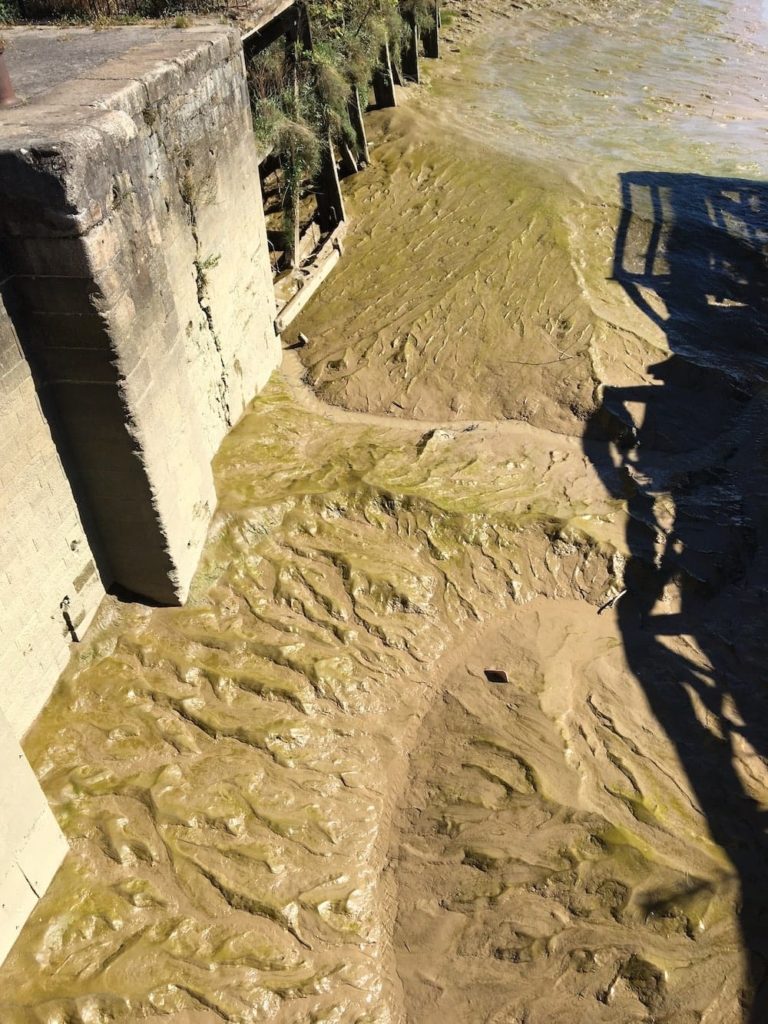
Bordeaux is pretty flat, and many people bicycle. They have those sturdy bikes with upright handles. Men and women alike look very sedate as they peddle about, with huge baskets or carriers on the front to carry their daily shopping, and a couple of baguettes. Not so sedate were the students in the area we stayed in, many of whom hung out at a place called “The Mother F——- Bar”. We witnessed one fight between Arab youth near the tram stop and fled when a knife came out. Where were the paratroopers then?
On the walking tour, our guide explained that in the past the city was divided into three sectors – the wine merchants, the nobility and rich, and the Jewish quarter (now mostly Muslims of North African descent). “When the economy is good,” the guide said, ‘we all get along.” A succinct way to sum up world history, I thought. Famine, drought, economic depression, plus a power-hungry leader who uses people’s fear of these things to persuade them different people are a threat, and boom! Human beings are fighting each other. The economy appears to be fine in Bordeaux, and wine is still one of its driving forces, as we discovered the next day.
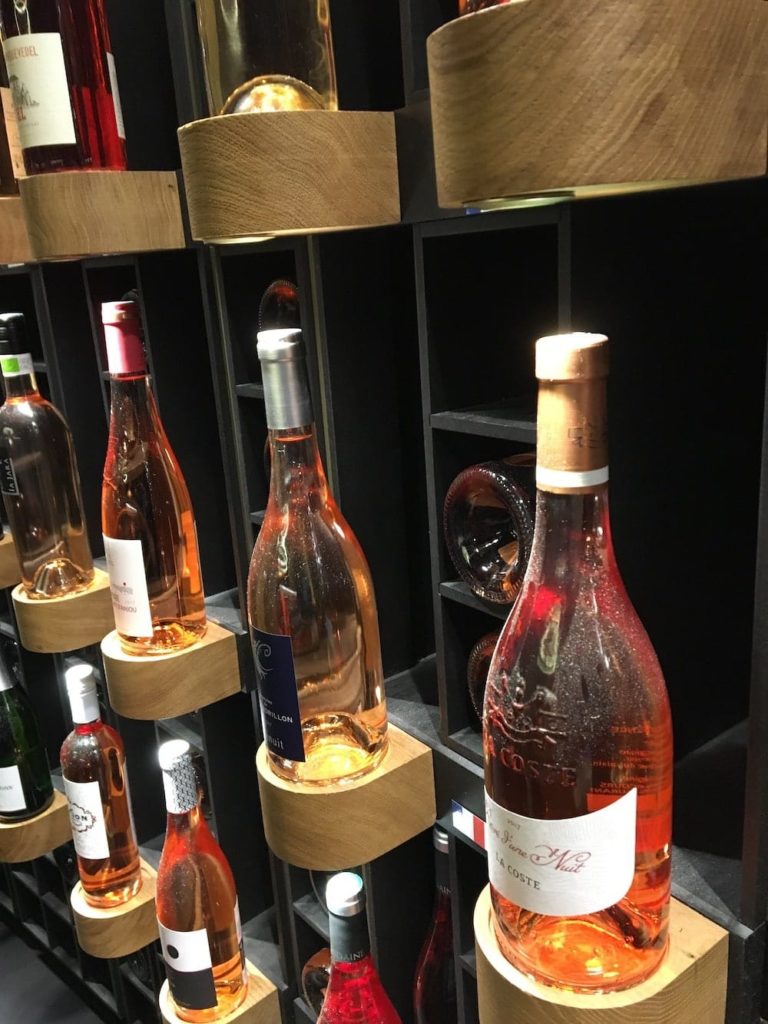
It was a gloriously sunny autumn day in Saint Emilion, where we explored the ancient walled town, tasted the wine and walked the country roads between the chateaux and vineyards. They were still harvesting, sometimes by hand. One worker walked down the rows of vines with a big plastic basket strapped to his or her back. The pickers transferred the picked grapes from their smaller baskets to the large one. Dinner was traditional – a good entrecote beef steak and a bottle of Saint Emilion wine. We slept well that night.
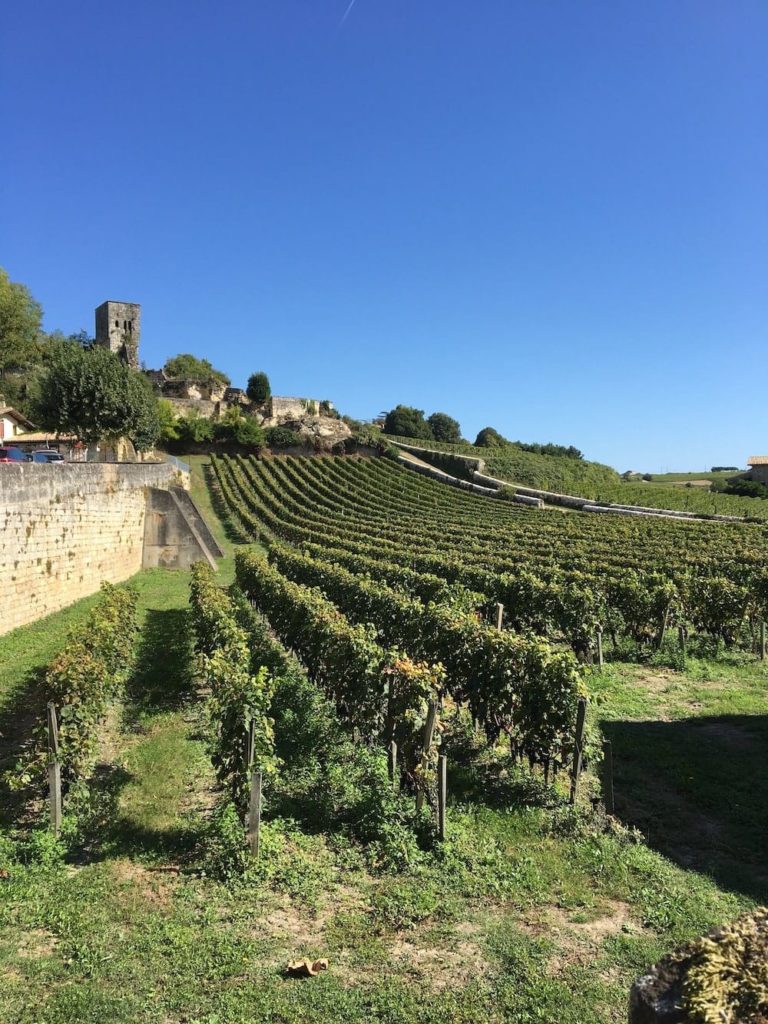
We left Bordeaux the next morning and headed to Le Bassin d’Arachon on the coast. We got to the sea-side holiday town of Arachon by driving across flat plains with huge fields of corn, and through the enormous forest which was a source of Bordeaux’s wealth, and is now a nature reserve. The sea basin is filled with sandbars and protects the area from the cold Atlantic Ocean. Arachon was quiet at this time of year, very genteel. We ate lunch next to the wide sandy beach and watched people fishing from the pier and taking their small boats out from the marina and actually sailing them!
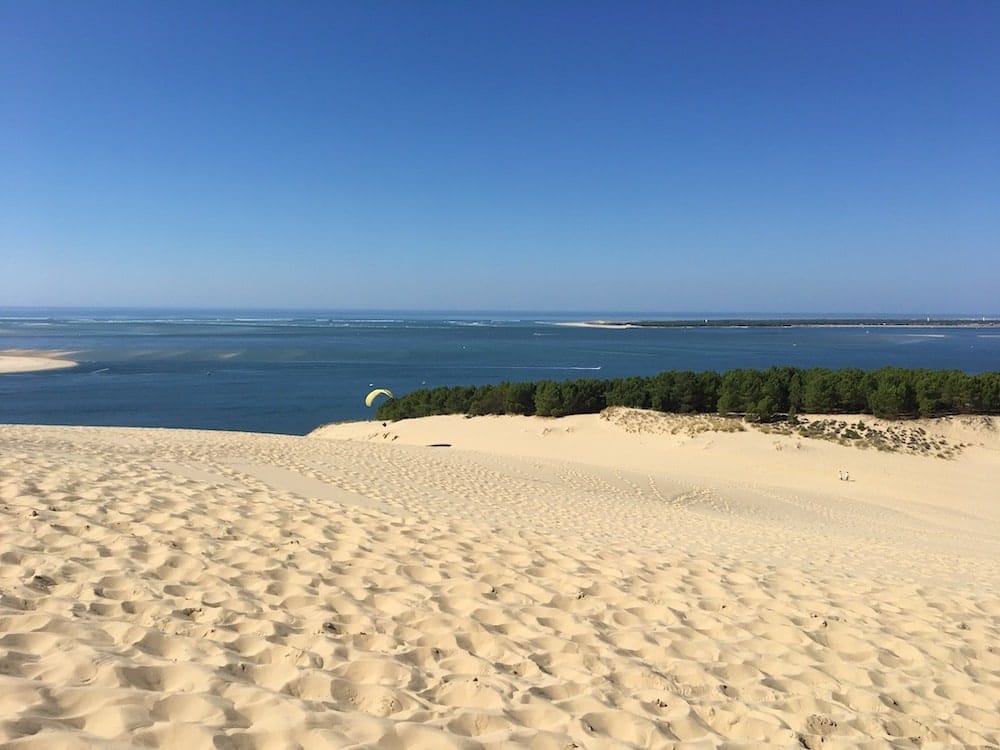
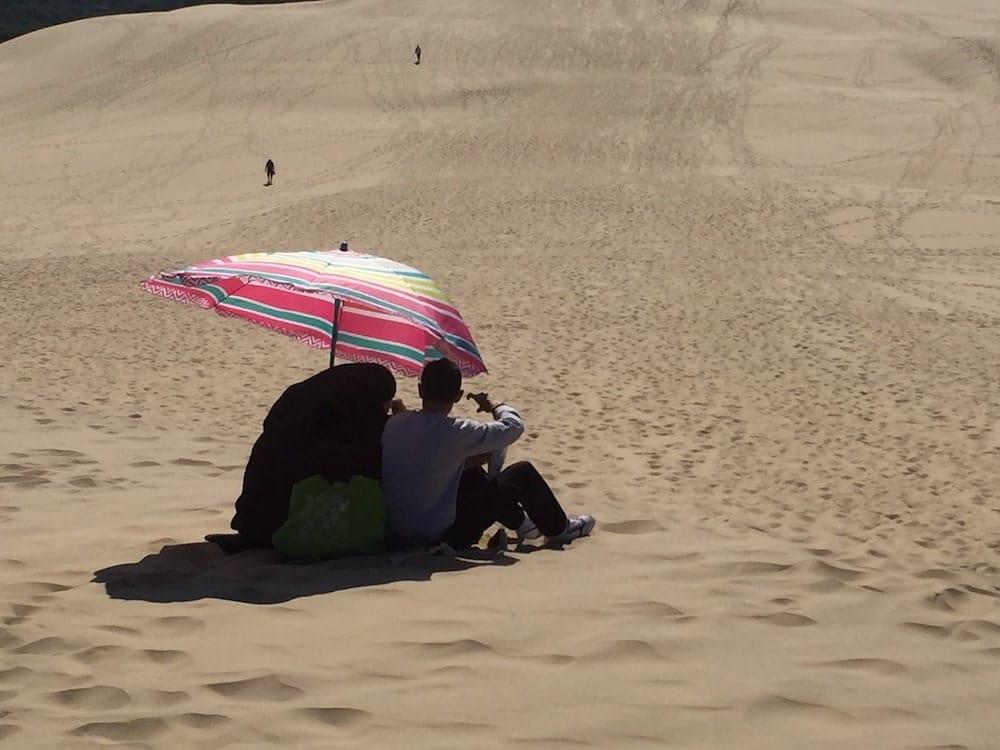
Our last stop before heading South along the coast was at the gigantic Dune de Pilat. This formed over 4,000 years where the basin meets the ocean. It’s about 150 metres high, and you can climb to the top of it. From there you can see the oyster farms set around the sandbars in the water below, watch the paragliders take off, and imagine you are in the desert. One couple was doing this, her in a full black hijab, shielded from the sun under an umbrella on the top of the dune, eating what must have been very sandy sandwiches. It took me a week to get all the sand out of my sneakers.

That night we stayed close to Biarritz near a place called Capbreton (I swear it’s true, all you Nova Scotians, a small fishing port on the coast). From a mile away, we could hear the tremendous surf crashing on the beach, and we watched a beautiful sunset over the ocean in the place where surfing was invented. We’d officially entered Basque Country.

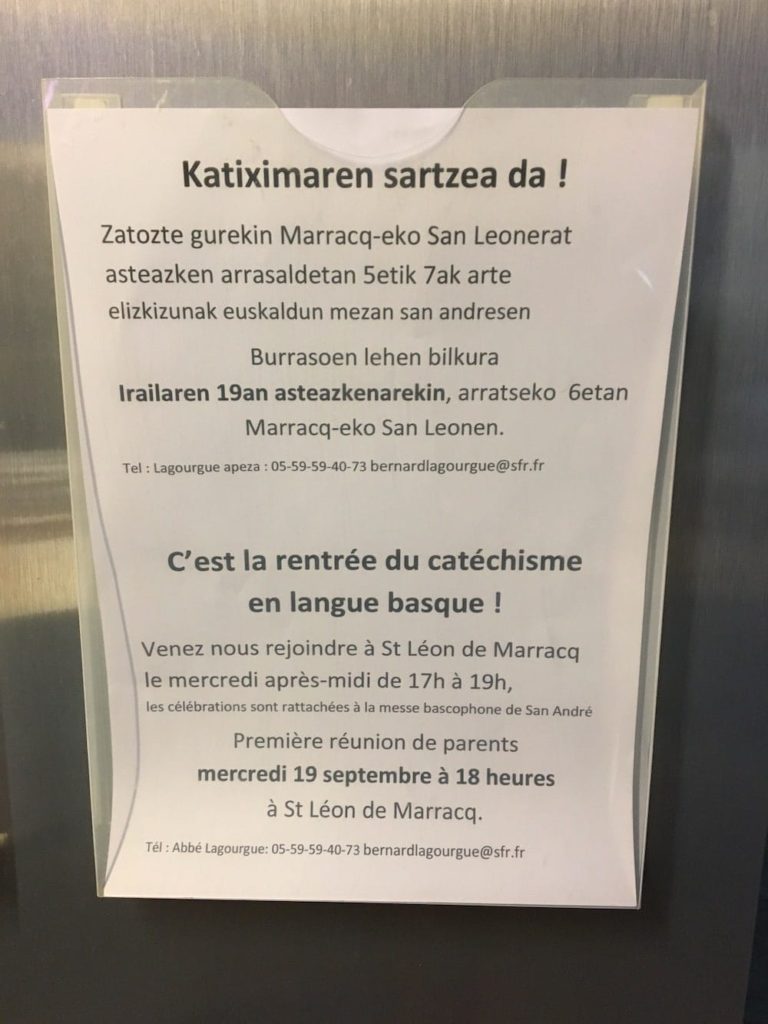
Bayonne is a market town built where two rivers converge. It looked medieval, like many other towns in the South of France. The difference with this place was the language. Suddenly all the signs were bilingual, and people were speaking Basque. This is a language with no connection at all to Romance languages such as French, Spanish or German, and with many ‘k’ and “x” and ‘z’ letters, it looks and sounds very foreign. Have a look at the poster advertising a mass in Basque at the cathedral. Ethnically, the Basque people are also distinct. As always, exploring the area through food is fun. They hand-make chocolate. Cured ham is the big delicacy, and I enjoyed the sheep’s cheese eaten with apricot jam and walnuts, though it was too strong for MLH. We went to a honey shop which had a good display about honey production in the area. The hives were made from strips of bark covered in cow dung, and when the master or mistress of the house died, the bees were ritually informed of the loss.
In Biarritz, the young surfers padded down barefoot to the semi-circular beach from their downtown digs, boards under their arms. There was filming going on, and some surfers were world class. Other than that, Biarritz was a bit of a non-event, rather drab and sad-looking. MLH was ready to relax after driving in unknown territory for several weeks and contending with the little-known genetic mutation in French drivers which allows them to operate a manual drive car while holding a cell phone against the steering wheel with the left thumb and texting with the right forefinger between gear shifts. They also have advanced eyesight, having the ability to sense without looking up from their phones when traffic is moving forward and where the lane lines are. (In truth, French drivers are not nearly as scary as the drivers in Texas, and don’t have guns in their glove compartments). In Spain, we were going to use public transportation, the better to continue our culinary education and the nightlife of San Sebastian.